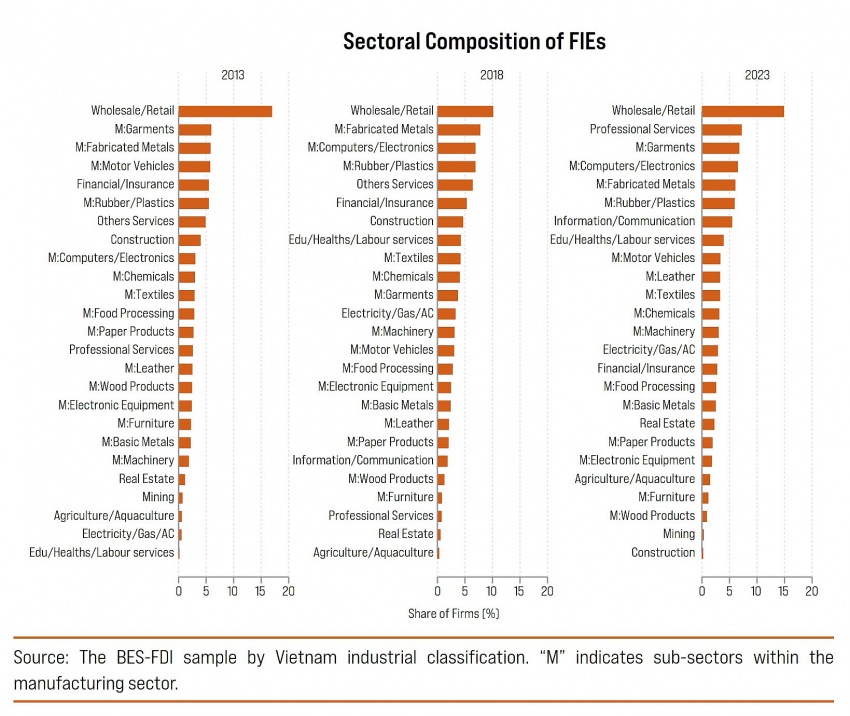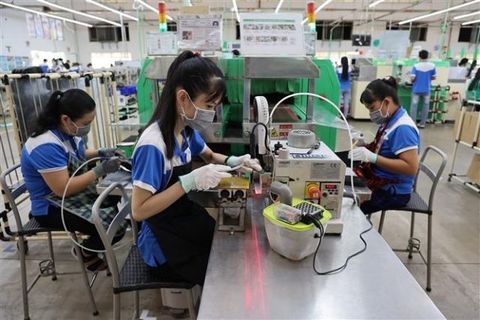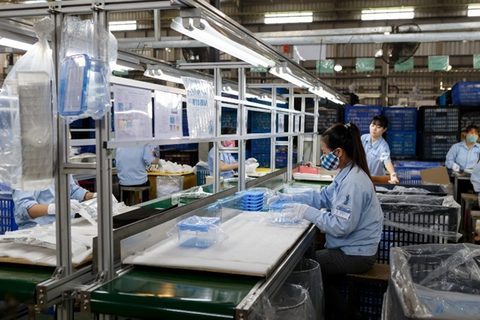Bright long-term prospects for Asia’s new rising star
Bright long-term prospects for Asia’s new rising star
Since the introduction of the Doi moi policy in the late 1980s, Vietnam has been one of the strongest-growing economies in the world – and looks to build on these reforms to continue sustainably growing far into the future. John Hawksworth, chief economist at PwC, delves into the key success factors that will propel Vietnam to 2050 and beyond.

John Hawksworth, chief economist at PwC
|
Vietnam’s success has reflected a combination of visionary leaders, a shared sense of societal purpose, and an embrace of globalisation. Foreign investment has been strong in Vietnam, which has helped it become one of the new ‘workshops of the world’, initially in labour-intensive areas like clothing and footwear but increasingly extending into higher value-added sectors like electronics.
This strong and sustained economic growth has lifted Vietnam from being a relatively poor country in 1990 to a middle income economy today. It has also been associated with major improvements in life expectancy, significantly reduced child mortality, and impressive gains in education levels.
Vietnam still has great growth potential
Our analysis at PwC, as published in our latest World in 2050 report earlier this year, suggests that Vietnam retains great potential to be one of the fastest growing economies in the world between now and 2050, together with India and Bangladesh. This could lift Vietnam to around 20th place in the global GDP rankings by the middle of the century, based on purchasing power parity (PPP) measures that correct for differences in price levels across economies.
Some may see this as unrealistic, but our projections only envisage an average real GDP growth over the period to 2050 of around 5 per cent per annum for Vietnam, slower than the average since 1990. We estimate that potential GDP growth could be around 6-6.5 per cent per annum in the medium term to 2020, although the rate is likely to slow to around 5.5 per cent in the 2020s, 5 per cent in the 2030s, and 4 per cent in the 2040s according to our model projections.
This projected growth profile reflects the inevitable deceleration of all economies as they mature and their populations age. We have seen this in the UK, US, Germany, Japan, and South Korea in the past and China today. But even in the 2040s, Vietnam could still be growing at around twice the 2 per cent trend rate likely in advanced economies like the US and the UK in the long run. Such growth rates, combined with a population rising above 100 million, would push Vietnam steadily up the global economic order, potentially becoming larger than a less populous economy like Italy by 2050.
Continued progress on structural reforms is required
However, realising this growth potential will not be automatic for Vietnam. It will require continued steady progress on structural reform efforts in four key areas: macroeconomic stability, banking reform, boosting private sector activity, and embracing new technologies.
- Macroeconomic stability – fiscal and monetary policy reform
In terms of macroeconomic stability, a key requirement – as recognised by the Vietnamese government – is to reduce the annual budget deficit to a more sustainable level of around 3 per cent of GDP by 2020. This will require broadening the tax base in areas like property tax and capital gains tax, as well as imposing greater discipline and restraint on public spending.
The government could also continue the gradual process already underway to make the exchange rate more flexible, so that it can act as a shock absorber for the economy. As in most advanced economies and an increasing number of emerging economies, this could also be linked to a move in the medium term to an inflation target set by the government but delivered by an independent central bank. This requires appropriate preparation, but could be a goal for, say, 2020.
- Banking reform – tackling non-performing loans
As in China, the Vietnamese government responded to the global financial crisis of 2008-2009 by boosting investment and credit. That was an appropriate response at the time, but it did leave the Vietnamese banking system with a legacy of non-performing loans. Progress has been made in addressing this issue, but, as last year’s IMF Section IV report on Vietnam said, there is still more to do here. A longer term programme of recapitalisation and consolidation of the Vietnamese banking system would also enhance financial stability and provide a strong platform for future growth.
- Boosting private sector activity and creating domestic export champions
Looking beyond the next few years, one of the key challenges facing the Vietnamese economy is to develop its private sector and make its state-owned enterprises more efficient. Part of this will involve levelling the playing field for access to capital and land between state enterprises and their private sector competitors.
Over time, a continued gradual process of equitisation for state enterprises would also be beneficial. But to maximise benefits for productivity and consumers, this will need to be accompanied by a strong regulator and competition policy regime to avoid public monopolies turning into private monopolies in areas like energy and telecommunications.
Another priority for government policy should be to support the development of domestic suppliers to multinational companies investing in Vietnam in areas like motor parts, electronics, and other high-technology sectors. Experience from China and South Korea has shown that this will enable knowledge and technology transfers from multinationals to domestic suppliers, some of which can then eventually become Vietnamese export champions in their own right.
- Technological progress – from adaptor to innovator
As Vietnam’s population ages, further economic development will rely increasingly on boosting productivity growth, which in the long run will be driven mostly by technological progress. Over the next decade or so, this may be mostly a matter of Vietnam making the best use of technologies developed in other countries. This could involve everything from adopting modern digital technologies in factories and offices to using the latest farm machinery and fertilisers to boost productivity in the agricultural sector (allowing more workers to move to manufacturing and services where their average productivity should be higher than it is in low-tech agriculture).
Once you look to 2030 and beyond, however, Vietnam – like Japan, South Korea, and China before it – will need to move from being an adopter of other countries’ technologies to an innovator in its own right. This will require developing a world class research base in selected areas linked to stronger universities and surrounding networks of entrepreneurial private companies, backed by government funding for basic science research and early stage business development. Intellectual property laws will also need to be developed and enforced more effectively as Vietnam develops its own technological innovations in the long run.
Having visited Vietnam recently for the APEC Senior Officials Meeting and listened to the president of Vietnam lay out his vision for the future at that event, I feel optimistic that the country can rise to these challenges and remain one of the fastest growing economies in the world over the coming decades.









